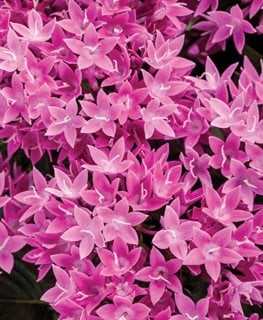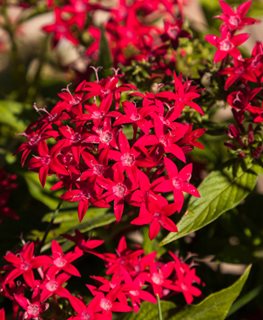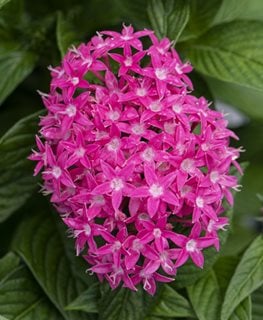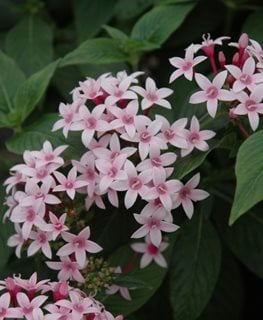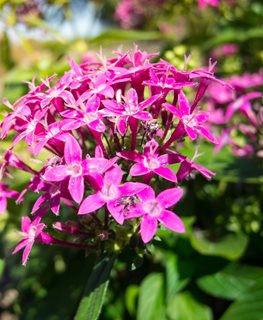How to Grow and Care for Pentas (Egyptian Star Flower)
These easy-care summer bloomers brighten up the garden with continuous, show-stopping color.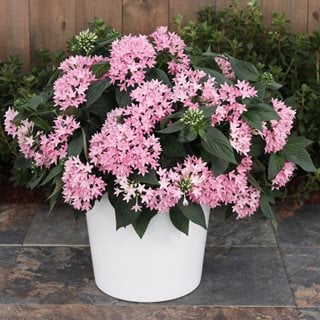
Sunstar® Pink (Pentas lanceolata). Photo by Proven Winners.
Also known as Egyptian star flowers because of their densely packed clusters of star-shaped blossoms, pentas are true superstars in the summer garden, prized for their vibrant beauty as well as their butterfly appeal.
Native to tropical East Africa, pentas flourish in high heat and humidity and can be grown as a perennial in frost-free climates. Elsewhere, use this sun-loving bloomer as a colorful annual in containers, beds and borders, and pollinator gardens. Egyptian star flowers are also great for cutting and can even be grown indoors as houseplants when given the right conditions.
On this page: Basics | Planting | Care | Pictures | Growing Pentas Indoors
On this page:
THE BASICS
Botanical name:
Pentas lanceolata
Other common names:
Pentas, Egyptian star flower, Egyptian star cluster
Plant type:
Usually grown as an annual; tender perennial in Zones 10-11
Exposure:
Full sun
Growth habit:
Mounded and upright
Height/spread:
1 to 2 feet tall and wide
Bloom time:
From planting until frost. In frost-free zones, plants will bloom year-round.
Flower colors:
Various shades of pink, magenta, lavender, red, and white, sometimes with contrasting centers.
Foliage:
Dark green and lance-shaped, with prominent veining. Will remain evergreen in mild climates.
Why pollinators love them:
Because Pentas bloom profusely all summer long, they provide a consistent nectar source for a wide range of pollinators. The broad, brightly colored flowerheads are especially irresistible to butterflies and hummingbirds, but bees also like to partake of their sweet nectar.
PLANTING PENTAS

Sunstar® Red pentas with Heart to Heart® 'Scarlet Flame' caladium. Photo by Proven Winners.
Where to plant:
: Pentas thrive in flower beds and containers that receive full sunlight (at least 6 hours daily). Although they will tolerate partial shade, they can become leggy and won’t bloom as robustly.
When to plant:
In spring, after the danger of frost has passed.
How to plant:
Dig a hole for each plant large enough to accommodate the rootball. Unpot the plant and gently loosen the roots with your hands to stimulate good growth. Place the top of the rootball even with the level of the surrounding soil then backfill to cover, firmly pressing the soil down with your hands. After planting, water thoroughly.
Soil requirements:
Pentas grow best in average, well-draining, neutral soil. If planting in highly acidic soil, consider amending it with dolomite lime (see Garden Soil 101).
Spacing:
If growing pentas in masses, space plants 1 to 2 feet apart, depending on their width at maturity.
Growing from seed:
Some cultivars of Pentas are more readily available in seed form. If planting from seed, sow the seeds indoors 7 to 9 weeks before the last frost date to get a head start on the blooming season. Press the seeds firmly into a high-quality seed starting mix without covering, since the seeds require light to germinate. Keep the soil evenly moist but not saturated, and place the seeds in a bright, well-lit location or under grow lights. Seedlings will emerge in 2 to 3 weeks.
Learn more about starting plants from seeds.
PENTAS CARE
Watering:
Although Pentas can handle a bit of drought, they perform best when watered regularly, especially during hot, dry spells. If you notice wilting of the leaves or the soil feels completely dry about an inch below the surface, those are signs that your plants need a good soaking.
Pentas grown in containers may need daily watering, especially during the heat of the summer.
Amendments and fertilizing:
To keep your Pentas blooming strong until fall, apply a controlled-release fertilizer at planting time followed by monthly applications of a water-soluble fertilizer starting in midsummer. Amending the soil with compost or other organic matter will also provide a nutritional boost while helping to improve soil drainage.
Deadheading:
You don’t need to deadhead Egyptian star flowers for continual bloom, but removing the spent flower clusters will promote more vigorous flower production throughout the season.
Pruning:
Pruning is generally unnecessary when growing pentas as annuals, unless needed to maintain the desired shape and size. In frost-free areas where pentas are grown as perennials, cut them back in late fall or early winter, after peak blooming season, to encourage branching and prevent legginess.
Pests and diseases:
Egyptian star flowers are unaffected by most pest and diseases, but spider mites and aphids can become a problem, especially when the weather is hot and dry. If growing indoors, be on the lookout for whiteflies.
VARIETIES
GROWING PENTAS INDOORS
If you live in a northern climate, you can bring your pentas indoors in the fall before the first frost and grow them as houseplants. This is easier to do if your star flowers are already growing in containers, but you can also take cuttings from selected plants and stick the cuttings in a well-draining potting mix to root.
To keep your indoor pentas healthy and in bloom give them plenty of bright light (or grow under artificial lighting) and place them in a draft-free room with high humidity. You can also increase the humidity around your plants by setting their pots on a shallow tray or saucer filled with pebbles and water.
Check the moisture level of the soil often and water plants thoroughly when the top inch or so of soil feels dry to the touch, allowing the water to drain from the bottom of the pot to avoid soggy roots.
RELATED:
Learn About Annuals
Annuals for Sun



